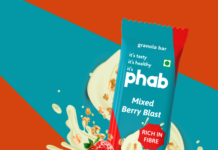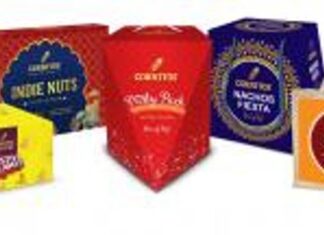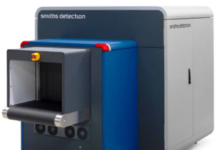Market Overview:
The skid resistant paper packaging market serves as a critical solution for industries requiring secure and stable packaging for their products during storage and transportation. Skid resistant paper packaging, also known as anti-slip paper packaging, incorporates specialized coatings or treatments to enhance friction and prevent slippage, thereby safeguarding goods from damage or accidents. This segment caters to a diverse range of industries including food and beverage, pharmaceuticals, electronics, automotive, and logistics, where ensuring the integrity and safety of packaged items is paramount.
Skid resistant paper packaging offers several advantages over traditional packaging materials such as cardboard or plastic. It provides superior stability and grip, reducing the risk of product movement or shifting during handling or transit. Additionally, skid resistant packaging is often eco-friendly, utilizing recyclable materials and contributing to sustainability initiatives across various industries.
Market Growth Factors:
Safety and Protection Concerns: With an increasing emphasis on product safety and integrity, industries are turning to skid resistant paper packaging to prevent damage, breakage, or spills during transit. Particularly in industries such as food and beverage and pharmaceuticals, where fragile or sensitive products are commonplace, the demand for secure packaging solutions that minimize the risk of accidents or contamination is driving the growth of the skid resistant paper packaging market.
E-commerce Expansion: The rapid growth of e-commerce platforms has spurred demand for robust packaging solutions capable of withstanding the rigors of online shipping and handling. Skid resistant paper packaging offers enhanced stability and protection compared to conventional packaging materials, making it particularly suitable for e-commerce applications where goods may undergo multiple handling and transportation stages before reaching the end consumer.
Regulatory Compliance: Stringent regulations governing the transportation and packaging of goods, especially in industries such as pharmaceuticals and chemicals, are driving the adoption of skid resistant paper packaging. Compliance with packaging standards and guidelines ensures the safe and secure transportation of products, reducing the risk of regulatory non-compliance and associated penalties.
Focus on Sustainability: The growing awareness of environmental issues and the shift towards sustainable packaging solutions are influencing the adoption of skid resistant paper packaging. Manufacturers and consumers alike are increasingly prioritizing eco-friendly packaging materials that minimize waste and reduce environmental impact. Skid resistant paper packaging, often made from recycled or biodegradable materials, aligns with these sustainability objectives, contributing to its growing popularity in the packaging industry.
Innovations in Material Science: Advances in material science and manufacturing technologies are driving innovation in skid resistant paper packaging, leading to the development of novel coatings, additives, and manufacturing processes that further enhance the performance and versatility of these packaging solutions. Continued research and development efforts are expected to fuel market growth by offering improved functionality, durability, and customization options tailored to specific industry requirements.
Market Opportunities:
Increased Focus on Product Safety: With growing consumer awareness and regulatory scrutiny regarding product safety, there is a rising demand for packaging solutions that offer enhanced protection during transit. Skid-resistant paper packaging presents an opportunity for manufacturers to address this need by providing reliable and secure packaging solutions that minimize the risk of product damage or breakage.
E-commerce Expansion: The rapid expansion of e-commerce has significantly increased the demand for robust packaging materials capable of withstanding the rigors of online shipping and handling. Skid-resistant paper packaging offers an opportunity for suppliers to cater to the unique requirements of e-commerce retailers by providing cost-effective, lightweight, and environmentally friendly packaging solutions that ensure product integrity throughout the delivery process.
Sustainability Concerns: With growing environmental consciousness, there is a shift towards sustainable packaging solutions that minimize waste and reduce environmental impact. Skid-resistant paper packaging presents an eco-friendly alternative to traditional packaging materials such as plastic or Styrofoam, offering biodegradable and recyclable options that align with sustainability goals. Companies investing in sustainable packaging solutions can capitalize on this trend by offering environmentally friendly alternatives to environmentally conscious consumers and businesses.
Customization and Brand Differentiation: In an increasingly competitive marketplace, brands are seeking innovative ways to differentiate themselves and enhance the consumer experience. Skid-resistant paper packaging offers opportunities for customization through printing, branding, and unique designs, allowing companies to showcase their brand identity and create memorable unboxing experiences for customers. By offering customizable packaging solutions, manufacturers can add value and stand out in the market, fostering brand loyalty and repeat business.
Expansion into New Markets: The versatility of skid-resistant paper packaging makes it suitable for a wide range of industries beyond traditional applications. Opportunities exist for suppliers to expand into new markets such as pharmaceuticals, automotive parts, and industrial equipment, where product safety and secure packaging are paramount. By adapting skid-resistant paper packaging to meet the specific needs of these industries, suppliers can tap into new revenue streams and diversify their customer base.
Technological Advancements: Advancements in packaging technology, such as improved adhesives, coatings, and manufacturing processes, present opportunities for enhancing the performance and effectiveness of skid-resistant paper packaging. Companies investing in research and development can develop innovative solutions that offer superior skid resistance, durability, and moisture resistance, meeting the evolving needs of customers and staying ahead of the competition.
Market Trends:
Demand for Sustainable Packaging Solutions: With growing environmental concerns and increasing emphasis on sustainability, there is a rising demand for skid resistant paper packaging made from recycled or biodegradable materials. Manufacturers are innovating to develop eco-friendly solutions that meet both performance and sustainability requirements, driving the adoption of environmentally responsible packaging practices.
Customization and Branding Opportunities: Skid resistant paper packaging offers significant opportunities for customization, allowing companies to incorporate branding elements, logos, and promotional messages. As brands seek to differentiate themselves in the market, customized packaging solutions enable them to enhance brand visibility, communicate product features, and create a unique brand identity, thereby driving consumer engagement and loyalty.
Advancements in Coating Technologies: Continuous advancements in coating technologies have led to the development of skid resistant paper packaging with improved performance characteristics such as enhanced frictional properties, moisture resistance, and durability. Advanced coatings, including water-based formulations and nano-coatings, offer superior skid resistance while maintaining compatibility with recycling processes, thereby expanding the applicability of skid resistant paper packaging across diverse industries.
Market Challenges:
Cost Considerations: Despite the benefits offered by skid resistant paper packaging, the initial cost of implementing these solutions may pose a challenge for some businesses, particularly small and medium-sized enterprises (SMEs). The cost of specialized coatings, customization, and sourcing sustainable materials can contribute to higher packaging expenses, impacting overall product costs and profit margins.
Compatibility and Compatibility: Ensuring compatibility between skid resistant paper packaging and automated packaging machinery poses a challenge for manufacturers, especially in high-speed production environments. Variations in coating thickness, surface properties, and dimensional stability may affect the performance of packaging equipment, leading to production inefficiencies and downtime.
Regulatory Compliance: Skid resistant paper packaging used for food, pharmaceuticals, and other sensitive applications must comply with stringent regulatory requirements governing packaging materials, food contact substances, and chemical safety. Manufacturers need to ensure that their packaging solutions meet relevant regulatory standards and undergo necessary testing and certification processes, which can be time-consuming and resource-intensive.
Latest Developments:
Innovations in Coating Formulations: Manufacturers are investing in research and development to innovate new coating formulations that offer enhanced skid resistance, moisture barrier properties, and sustainability credentials. Advanced coatings incorporating renewable materials, bio-based additives, and novel surface modification techniques are being introduced to address evolving market demands and regulatory requirements.
Integration of Smart Packaging Technologies: The integration of smart packaging technologies such as RFID (Radio Frequency Identification) tags, QR codes, and sensors with skid resistant paper packaging is enabling real-time tracking, authentication, and monitoring of products throughout the supply chain. These technologies provide valuable data insights, improve inventory management, and enhance product traceability and safety.
Expansion of Applications: Skid resistant paper packaging is increasingly being adopted across a wide range of industries beyond traditional applications such as food and beverage. From electronics to pharmaceuticals to automotive components, manufacturers are recognizing the value of skid resistant packaging in protecting fragile items, minimizing damage during transit, and enhancing overall product quality and customer satisfaction.































